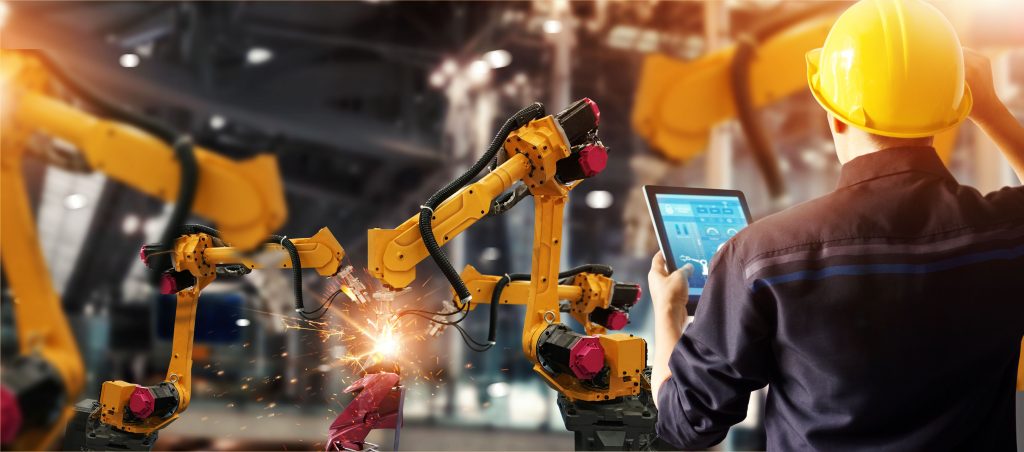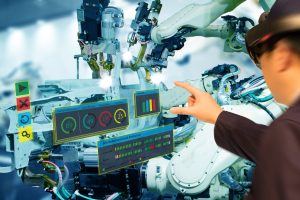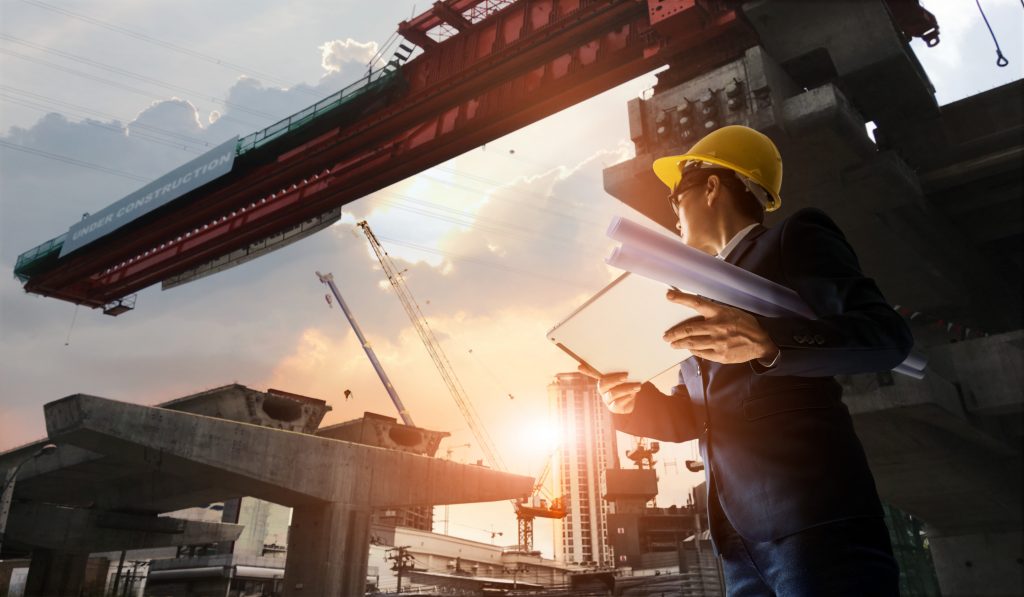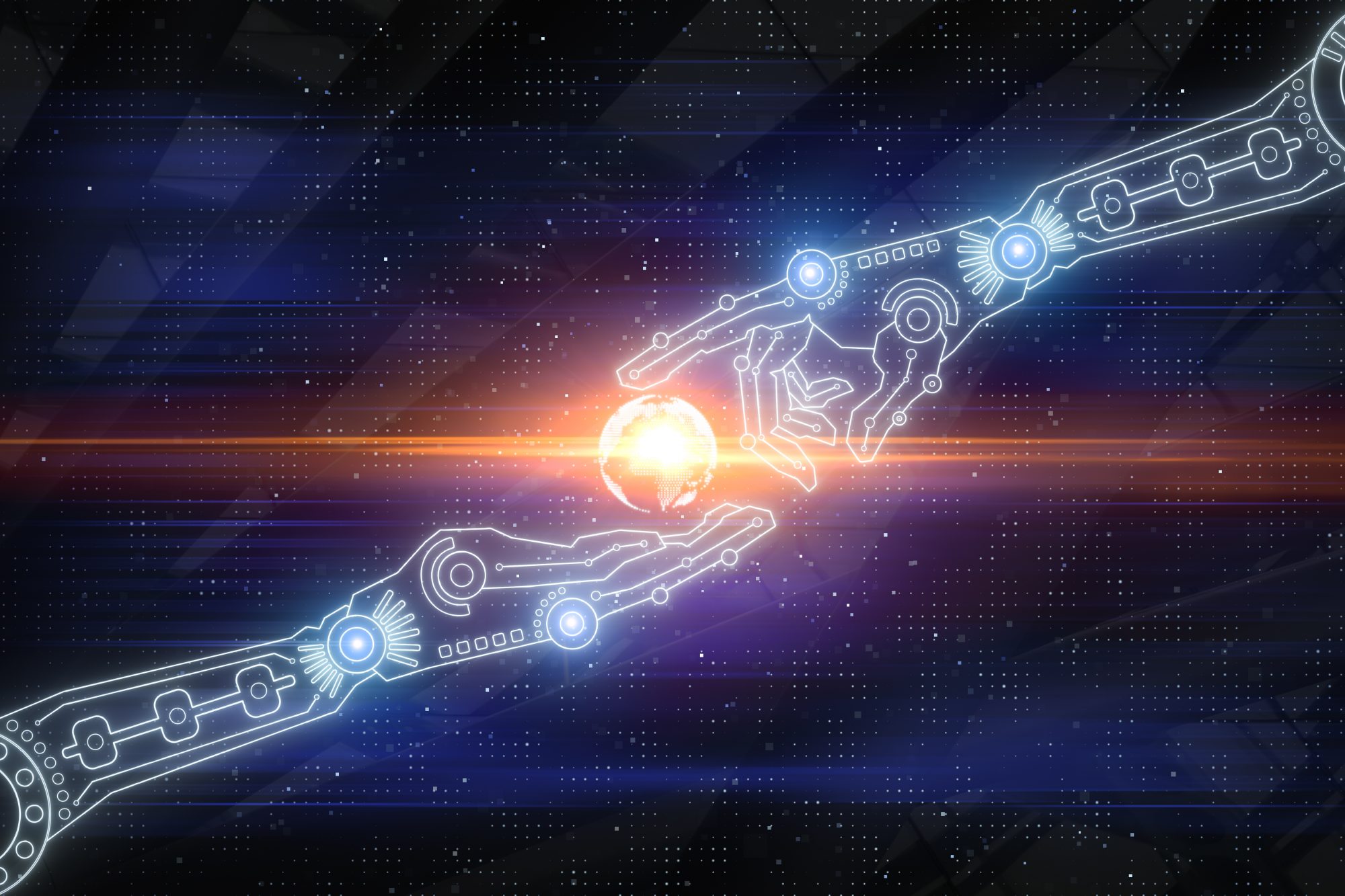As technology continues to advance, so does the impact that it has on the construction industry. With these advances, comes new and innovative opportunities that were once thought only possible in sci-fi TV and film. Here, we take a look at the top technologies in action – and how companies are using these innovations to stay ahead of the curve
-
Digital twins
So, what is it? Digital Twin is a type of virtual model technology, which is designed to accurately replicate a physical item. Using drones, sensors and IoT technology, digital twin creates and collects data related to the performance of the physical object that it replicates.
Within the construction industry, digital twin technology can be used to improve building design performance, creating an innovative and new way for construction professionals to operate.
According to research from Gartner, many companies have made the shift to digital twin technology in the wake of Covid-19, to “improve their employee or customer safety” through remote asset monitoring, which subsequently means a reduction of the physical workforce in post-pandemic times.
By 2023, Gartner predicts that “one-third of mid-to-large-sized companies that implemented IoT will have implemented at least one digital twin associated with a Covid-19-motivated use case”.
Twinmotion uses digital twin technology to a provide high-quality, real-time architectural visualisation tool which transforms BIM and CAD models into high-resolution images, panoramas and virtual-reality videos.
Digital Twin technology is having an exciting impact on modelling urban landscapes. As the demand for greener urban landscapes increase in the midst of a more climate-conscious world, Twinmotion uses digital visualisation tools to create ambitious designs that are both viable and desirable.
-
Robotics and drones
As the UK faces crippling labour and skills shortages each year, alongside the UK Government’s aim to build 300,000 homes a year by the mid-2020s, robotics and drones are a seriously exciting concept in the construction industry.
From automated technology to demolition and brick laying, innovative robotic construction technology is making way for a work to be completed at a quicker, cheaper rate. Projects that once required large teams to complete now require less of a physical workforce, with some robots able to lay up to four times the amount of bricks than the average builder.
As one of the least automated industries, the construction industry still has a long way to go on its digital journey. Although a relatively new concept, many entrepreneurial companies are using robotics software which incorporates virtual take-off and landing (VTOL) systems that can hover, take off and land vertically, enabling construction maintenance and safety checks to be done in a safe, hands-free way.
However, the use of robotics and drones have yet to be utilised in many larger-scale projects due to the robot’s inability to problem solve outside of their programmed area. Robots often require controlled working environments and construction sites are the opposite – with variables such as weather conditions and landscape gradients making it impossible to predict what happens on a construction site!

-
Augmented Reality (AR)
AR and VR tech is at the forefront of ground-breaking technology in the digital construction sector.
So, what is it, and how can it be used in construction?
According to the Franklin Institute, augmented reality is one of the biggest technology trends today, as smartphones and other technological platforms become more accessible and readily available not only in day-to-day life, but also within industry sectors.
Augmented Reality is a type of technology that creates precise simulations of construction landscapes to help design structural changes and aid in design improvements. Not only is AR tech great for construction design, but it also aids in risk assessment technology through the use of reinforced hazard simulations.
-
Virtual Reality (VR) technologies
Virtual Reality is slightly similar to Augmented Reality, they’re like two sides of the same coin. VR uses computer technology to create a simulated environment, but unlike AR which uses computer-generated images, with VR the user placed inside of the simulation using tech such as headsets.
VR is a pretty big talking point, as it has evolved from its original gaming and entertainment purpose and is now being designed and modified into state-of-the-art equipment that many industries – including construction – can revolutionise to assist with digital construction design and planning.
Companies like FARO are using virtual reality to assist contractors in visualising project sites in full detail that can be exported in various formats, meaning that users can visualise and evaluate onsite real-world conditions in an office environment.
Similarly, industry giant Graham innovated 3D VR tech to create Cornbrook in Manchester, a residential housing complex. Allowing subcontractors and representatives to virtually explore the completed project, the technology assisted in the physical build of the project, and in the visualisation of individual room design as users can explore design elements from materials to lighting.
VR is ENORMOUS in the news right now as it is at the forefront of HS2’s innovation programme. Arup are using advanced virtual reality technology to recreate what HS2 will look like in the early design and planning stages, long before it will come to fruition.
Used to plan, visualise and verify each route, VR enabled ‘designers to policymakers to make better decisions at every stage of the process’.
All in all, VR is seriously changing the way we think about 3D design modelling today. Besides just being able to visualise digital modelling, VR allows for a much more immersive space that can be assessed virtually in every detail – even before the physical construction has started.

-
AI technology
Artificial technology – AI technology as we often call it – is part of an intelligence field which utilises data collection and computer science to enable quick and efficient problem solving.
As construction relies on hundreds of workers operating at once on the same projects, organisation is key to ensuring that deadlines and safety checks are met accurately, and on time. AI is therefore a means to aid in a faster and smoother on-site management, that increases productivity, mitigates risks, and plans projects long term.
So, who is using AI technology in the industry sector?
Companies such as Buildots are using AI to develop construction management software. Using a hard-hat mounted 360 camera to create a digital twin of a construction site which documents the construction process at every stage and is uploaded to the Buildots Control Centre app.
Users can then view comprehensive and detailed project reports to manage resources and keep on schedule. You can view more information on Buildots mission control here.
-
3D printing
Popular in the industry for its ability to build and test prototypes quickly, 3D printing is the technique that uses a device to create physical objects from digital models.
Initially designed to aid in product prototyping, 3D printing has developed from merely an aiding tool in the design process to one of the biggest key players in the industry.
Through enabling efficient prototype testing, companies can keep up to date with their competitors, skyrocketing the speed of industry innovation.
Moreover, with 3D printing having developed from printing prototypes to creating construction design components and ‘printing’ huge structural elements, 3D printing is completely reinventing the industry as we know it.
Alongside the obvious benefits of greater speed and efficiency, 3D printing also has huge environmental benefits, as it creates significantly less waste than traditional manufacturing processes. This is largely due to the accuracy of 3D printing, so only as many materials as necessary are used for the manufacturing process.
A recent example of 3D printing used in the industry is the MX3D steel footbridge in Amsterdam, which was opened July this year. Developed by Dutch technology MX3D in collaboration with Joris Laarman Lab, the bridge is a culmination of traditional steelwork and digital modelling welded into the urban landscape.
As more and more of these state-of-the-art infrastructures appear within the construction and architecture sector, we are given a glimpse into how 3D printing technology has the ability to shape our urban landscapes in the near future.
-
Project management software
Project management software is one of the hottest technology sectors in the industry right now, and for good reason. As project managers are faced with the difficult task organising different teams across the construction site, management tech is an effective solution to keeping teams organised and coordinated.
Aiding in scheduling, tracking, and managing a project from beginning to end, project management software not only assists with managing the physical build, but the expected and actual costs of a construction project too.
Project management software specialists to look out for
Procore’s project management software, Procure Platform – is designed to improve the communication across the project team from field to office. Using smart software which assists the user from cost control to the reduction of safety risks, Procure Platform is a smart, easy to use platform.

8. BIM
Building information modelling (BIM) is the process whereby 3D models are utilised to design and build a virtual environment. BIM has transformed the way in which we think about design today and has been described as ‘the digital description of absolutely every aspect of the built asset’.
BIM software is the way forward in construction right now.
BIM software providers
SCIA utilises BIM technology through combining structural engineering and design technology to provide structural analysis software to the AEC industry. Through combining their support and structural analysis software, SCIA enables the user to enhance their workflow and productivity effectively. To learn more about SCIA’s vision, click here!
Alternatively, Bluebeam is another company who are using BIM software to enhance project efficiency. Their paperless workflow solution Revu allows teams to ‘work smarter’ through automating documents and enabling a system which shares everything from 3D data to metadata. Check out their mission here.
Other BIM software providers include:
- Vectorworks, Inc. – a BIM and 3D design software provider serving the architecture, landscape architecture and entertainment industries
-
Nemetschek Group – AEC software specialists
-
ALLPLAN – Europe’s premier supplier of BIM solutions for architects and engineers
Lydia Bamford














